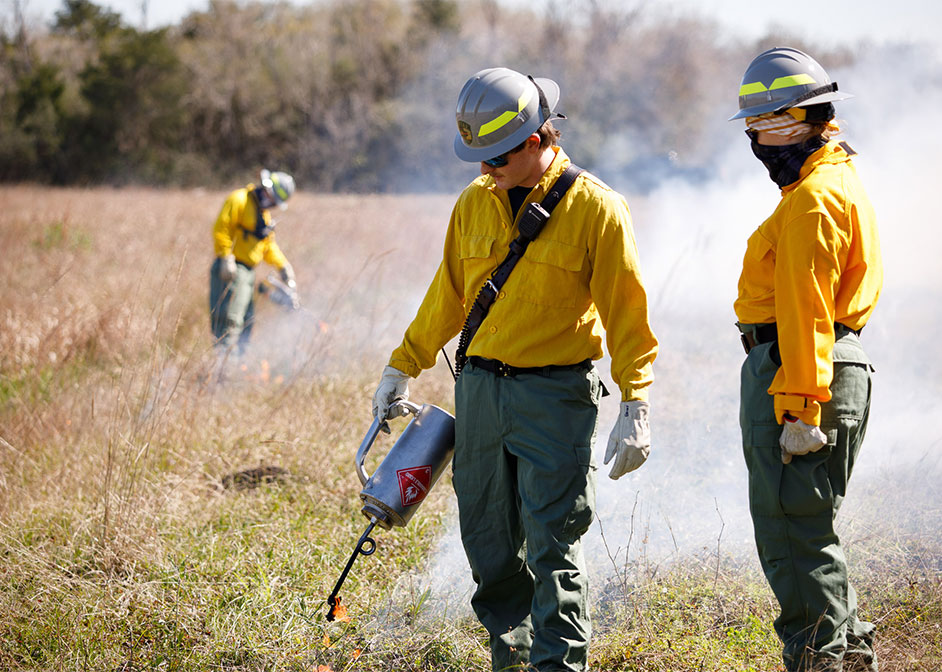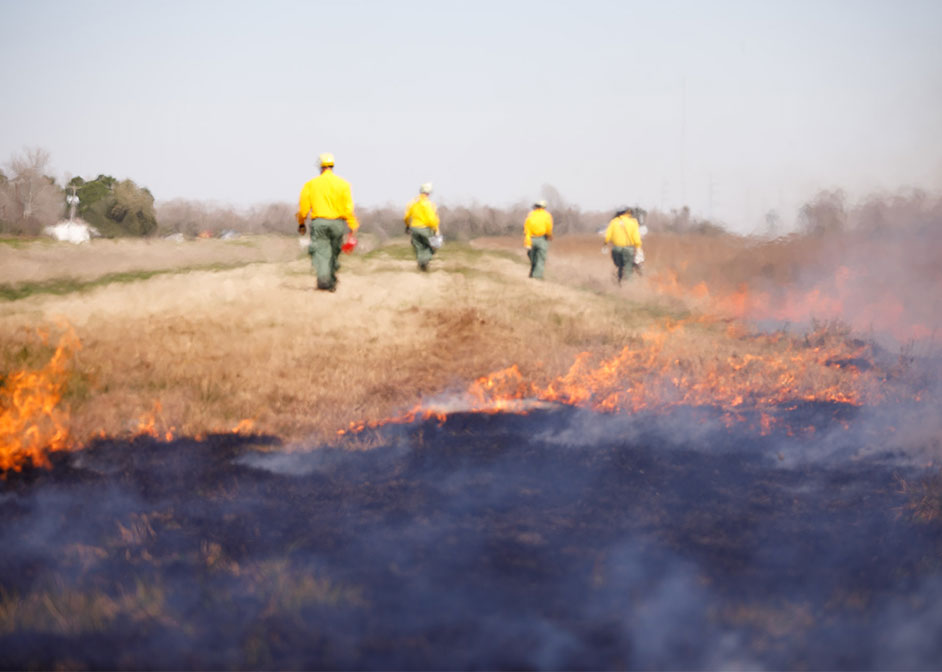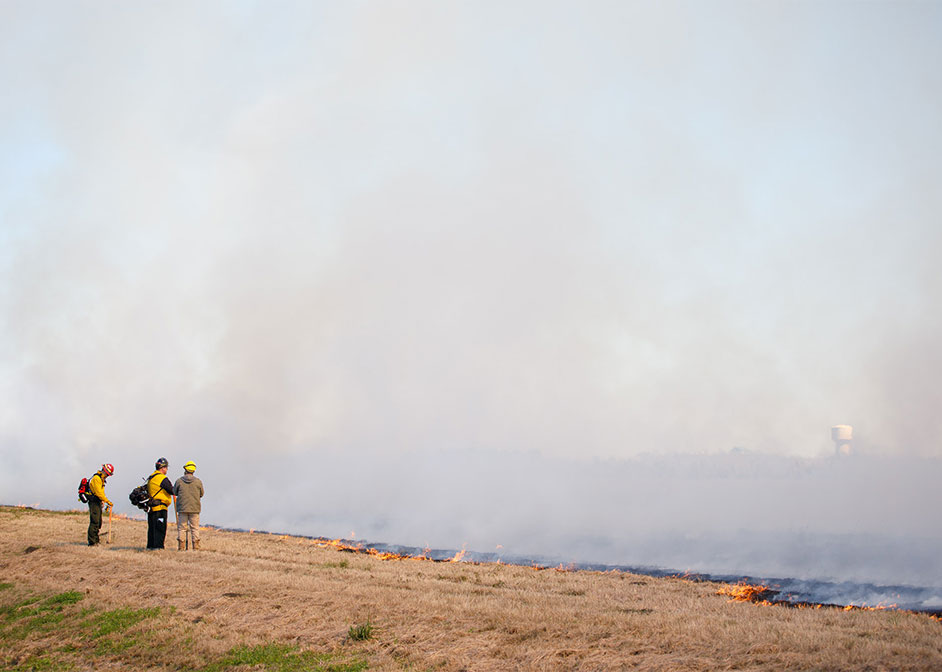UH Staff, Community Volunteers and Firefighters Benefit from Collaboration, Burning Nearly 100 Acres of Coastal Prairie Land
On a clear day in late February, huge billows of smoke puffed up above the University of Houston Coastal Center in La Marque, Texas, before being blown away. The weather and wind were finally favorable, and the burn crew was ready for the anticipated prescribed burn.

Local firefighters worked across the Aumann Prairie, a 100-acre plot of coastal prairie land named after former UH College of Natural Sciences and Mathematics Dean Glenn Aumann, setting it ablaze.
The Coastal Center is the Texas Institute for Coastal Prairie Research and Education, as designated by the Texas Legislature. It boasts more than 300 acres of threatened coastal prairie land for environmental research and science education within its 925-acre footprint. Steven Pennings, Moores Professor of Biology and Biochemistry, is the director of the Coastal Center.
“We have been looking for months to get the right conditions for this burn,” said Evelyn Merz, program director of the UH Coastal Center. “One of the best management tools to keep a really fine coastal prairie in the best condition is to have a prescribed burn.”
Prairies evolved with bison and fire. However, it is difficult to have a fire on prairies today because they must be controlled to avoid encroaching on buildings and to minimize smoke production.
“We are really trying to take the place of nature by having this prescribed fire,” Merz adds. “No matter how carefully you try to maintain your prairie – mowing and herbiciding isn’t enough. To really promote biodiversity, you need prescribed fire as part of the mix.”
Partnering With Local Fire Departments
To perform the burn, the UH Coastal Center teamed up with local, southeast Texas fire departments.

Fire Captain Brennan Briggs, with the La Marque Fire Department, led the burn. Firefighters lit the grass with a mixture of diesel and gasoline from drip torches. Briggs said the tools do not dump fuel on the ground but drip just enough on the surface of the grass to start a flame.
These controlled burns are training opportunities for firefighters.
“They get to study the weather,” said Briggs. “It doesn’t seem like much, but it really is a pretty complex thing. When we go to an actual wildfire that we didn’t start, the weather is going to influence how the fire grows, shifts and travels. Being able to see it in a controlled environment really helps them out later when we respond to those big fires.”
The firefighters are part of the Texas Intrastate Fire Mutual Aid System, a coalition of different fire departments that respond to large wildfires in Texas and the nation. Last year, some of the firefighters were deployed to California to combat wildfires.
Clearing Invasive Species
Without naturally occurring wildfires and prescribed burns, invasive species can take a foothold.
At the Coastal Center, tallow trees would take over the land if not controlled. Merz said although you cannot kill a full-grown tallow with fire, smaller trees can be knocked back.
Even native species can become invasive. Wax myrtle and yaupon, for example, were also burned to better maintain the prairie.
“We’re using the fire not only to knock back the bad actors,” Merz said, “but as well to promote the natural life cycle of our native grasses and flowers.”

The native, non-invasive flora burned at the Coastal Center included switchgrass, little bluestem, big bluestem, long-spike tridens, yellow Indian grass, rattlesnake master and goldenrod.
“You’ll find that some plants, such as the plant we call Liatris or prairie gayfeather, have a tremendous bloom the season after a prescribed burn,” Merz said.
Community Effort
Aside from the natural benefits, Merz said the controlled burn establishes outreach.
“This is an important field outpost for the University of Houston, and we are setting up good relations here with our southern neighbors,” Merz said.
The Galveston Bay Area Chapter Master Naturalists joined firefighters to volunteer at the burn.
Next year, the Coastal Center team plans to conduct another controlled burn on a different unit of the prairie.
“What we’re doing here today is meant to benefit the region,” said Merz. “Our goal is really to become a national hub for coastal prairie research and education.”
- Rebeca Trejo, College of Natural Sciences and Mathematics